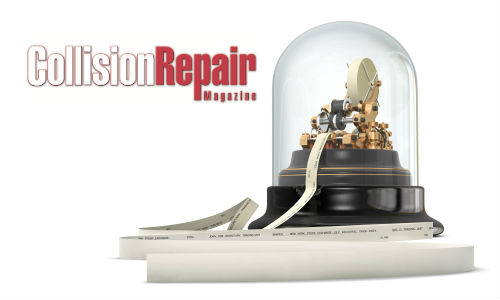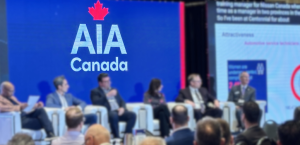By Jeff Sanford
Toronto, Ontario — August 14, 2017 — In this week’s Tuesday Ticker, the earnings season continues as the Boyd Group reports a huge jump in revenue in the wake of the Assured Automotive acquisition, Axalta reports an adjusted decline in earnings over the last year, and much, much more!
– Earnings season continues as publicly traded companies report their latest financial results. The Boyd Group announced a big jump in earnings as the organization reported its first financial results in the wake of the acquisition of the Assured Automotive chain earlier this year. Boyd reported second-quarter revenue was up a big 16 percent over the same period in 2016. Revenues were CAD $384 million. Even as the company grows through acquisitions, Boyd is also growing through increasing traffic at stores. The company also reported that same-store sales had increased 3.4 percent. Overall, sales in the quarter were CAD $384 million, which is a big jump from the $331.0 million reported in the same period in 2016.
“The second quarter of 2017 was successful in providing us with an even stronger growth platform and additional resources to advance our strategy. The North American collision repair industry remains highly fragmented and we see many opportunities to acquire attractive repair centers and achieve accretive growth. Operational excellence remains central to our business model and we will continue to work to drive excellence in customer satisfaction and repair cycle times, ensuring the continued support of our insurance partners … Looking ahead to the remainder of 2017, we are confident that our strategy will continue to deliver results in terms of adding locations and operational execution,” said Brock Bulbuck, CEO of Boyd.
Bulbuck went on to touch on some of the other issues at the company, including the trouble with finding skilled employees. According to Bulbuck, Boyd has had some production challenges that were described as “summer vacation-related.” Apparently the company has had trouble finding replacement workers to fill in over the summer months as a result of the “the continuing technician shortage” that is an issue across the entire industry.
During the conference call, the COO of Boyd, Tim O’Day, said the company is stepping up efforts to recruit new technicians, improve employee retention, and strengthen its apprenticeship program. The company also announced that it had expanded its credit facility to USD $300 million, an indication the company will continue to look for acquisitions.
Bulbuck was careful to note during the conference call that a rising Canadian dollar could have an impact on earnings later this year.
“We do however expect to face significant currency headwinds as the recent increase in the value of the Canadian dollar compared to the US dollar will make second quarter to third quarter and year-over-year comparisons challenging,” said Bulbuck.
The Boyd executives also discussed what they described as “catch-up pricing adjustments” related to DRP insurer rates. According to Bulbuck on the call, “We continued to be benefit from improved DRP pricing and cost reductions that benefited margins … These DRP price increases have essentially reflected catch-up pricing adjustments for investments made over time in (higher) labor costs, training, overhead and equipment.”
Bulbuck also commented (in a press release) on the trend toward insurers offering better rates for improved performance cycle time and customer satisfaction. “As performance based DRP programs with insurance companies continue to develop and evolve it is becoming increasingly important that top performing collision repairers, including Boyd, continue to drive towards higher levels of operating performance as measured primarily by customer satisfaction ratings, repair cycle times and average cost of repair,” said Bulbuck. As way of generating better performance metrics the company said it would, “… continue to make investments to enhance its processes and operational performance.”
Over the past year and a half the company has embarked on an update of its IT assets, including upgrading top management information systems, as well as hardware, network and security systems. In 2017 so far Boyd has spent $2.1 million on updates to IT. That spending is set to increase, apparently. Over the next year, the company expects that capital expenditures in these areas will be, “… $8 to $10 million in excess of historical maintenance capital expenditure levels. Additionally, in 2017, the company intends to invest $4 to $5 million in specialized collision repair equipment related to new vehicle technologies. These proactive investments will better position the company to meet anticipated market needs.”
As for the auto glass side of the business, Bulbuck said that, “… our glass business continues to face pricing and market challenges in 2017 that cause it to underperform in comparison to last year.” He went on to explain to the analysts that the company has little ability to raise rates in a business that is so highly and actively competitive. “There really is no lever we can pull on pricing itself” aside from incremental sales gains,” said Bulbuck on the call. He did say, “we still very much like the glass business,” and noted that glass is a cyclical sector, which was generating “double-digit” returns just a few years ago. “Glass is an attractive low-capital, high-return business that complements collision,” said Bulbuck on the call. Boyd doesn’t break out the numbers on glass publicly, but the CEO did say the revenues are in the “$100 million range.”
Another interesting detail from the call: Apparently, when Boyd buys a single-store shop without a DRP plan and then brings one into place the company can, “… achieve as much as a 25 percent return on capital within two years,” said Bulbuck. That is a remarkably profitable practice. No wonder the company is growing so fast. Investors are increasingly catching on to the good story at Boyd. The company is turning up in lists of “top stock picks” produced by analysts. Also no wonder. It was only in February of 2016 that units in the Boyd income fund were trading at about $60 a unit. This June units traded a high as $102 and are currently trading at about $98 a unit.
– Global paint maker Axalta also released results this past week. Lower sales volumes and increased prices for inputs were a drag on profitability with, “… adjusted [earnings] declining just over 9 percent in the quarter,” according to Charles Shaver, CEO of Axalta, on a conference call announcing the results. “The driver of this performance included Axalta-specific factors as well as more market-driven elements … Additionally, we faced some uneven demand in a few areas that affected market participants generally, as well as the confluence of lower prices with certain customers at the same time that raw material costs have inflected upwards. These factors, of course, are common to all coatings players to some degree,” said Shaver.
“Looking ahead, I continue to see a stable global business climate. As we highlighted previously, we’re working through a transition period in raw material input pricing, along with some product mix and inventory adjustments in select refinish channels. We see our demand outlook as fundamentally sound for the balance of the year, supported by slightly recovering Latin America, a stronger level of Commercial Vehicle demand versus last year and broadly stable refinish demand at the bodyshop level to drive growth for Axalta … Light vehicle demand also remained stable overall today at the market level, exceeding expectations for many observers.”
CFO and Executive Vice President Robert Bryant was also on the call and said that the company enjoyed organic growth of 1.9 percent, but that prices declined by 1.2 percent. Refinish net sales were down 4.3 percent (not counting the effects of exchange rates).
In a news release Axalta suggested lower prices for refinishing products was due to, “selling channel consolidation in North America,” that is, consolidation among jobbers. As well, Bryant noted that on April 1 in North America the company increased some prices. This generated a lot of “pre-buying” in March and ended up “eating into demand” and sales last quarter. According to Bryant, “This impact is expected to be transitional, however, and not structural, as we remain net-share gainers at the end customer bodyshop level.”
Overall, says Bryant, Axalta has continued to spread into more business in North America, and that “our shop count has continued to climb year-to-date … Underlying refinish demand remains fairly steady globally given the link to global accident rates and miles driven.”
One issue around pricing discussed by the company involved the basic ingredient for white paint, titanium dioxide. The company last month announced a surcharge on the material tom,”… compensate for the company’s own higher costs,” according to a media report.
On the conference call the CEO suggested Thursday other paint manufacturers would likely have to raise prices as well. White is, after all, the number one car colour globally.
– AutoCanada, the only publicly traded auto dealership group, also announced second-quarter earnings last week. The company’s stock has sold off in the wake of slow business in Alberta where many of the company’s assets are located. But it seems investors are looking to get back into the stock as the economy begins to recover out west and AutoCanada diversifies into eastern Canada.
Stock in AutoCanada rocketed ahead over 10 percent on Friday alone as investors digested the good news at the company. Revenue was up 6.3 percent to $895 million from $842 million in the same period in 2016.
Steven J. Landry, President and CEO said that, “The acquisition of Mercedes-Benz Rive-Sud in Montreal not only adds the Mercedes-Benz and Smart brands, but also provides us with a facility in full compliance with brand image standards, adds 28 service bays and is one of only three authorized Mercedes-Benz collision centres in Quebec. We are very pleased with the early results from this store and will continue to pursue similar opportunities in other markets while our discussions continue to enhance our various OEM relationships.”
New vehicle sales were 13,429, up 11.0 percent from the same period in 2016. The most interesting part of the report was to note the remarkably big chunk of total profits at the company that come from collision and mechanical repair. The company reported that, “Parts, service and collision repair generated $114.0 million of revenue in the second quarter, up 13.6 percent from 2016. This accounted for 12.7 percent of the Company’s total revenue and 39.1 percent of its gross profit, versus 11.9 percent of revenue and 39.3 percent of gross profit in 2016.”
Chris Burrows, CFO, said, “There were a number of encouraging signs for the Company this quarter… New vehicle sales were up as was revenue from parts, service and collision repair.” According to the financial documents released by the company the number of service collision repair orders completed this year was up slightly, to 228,872 from 227,446 last year.





































